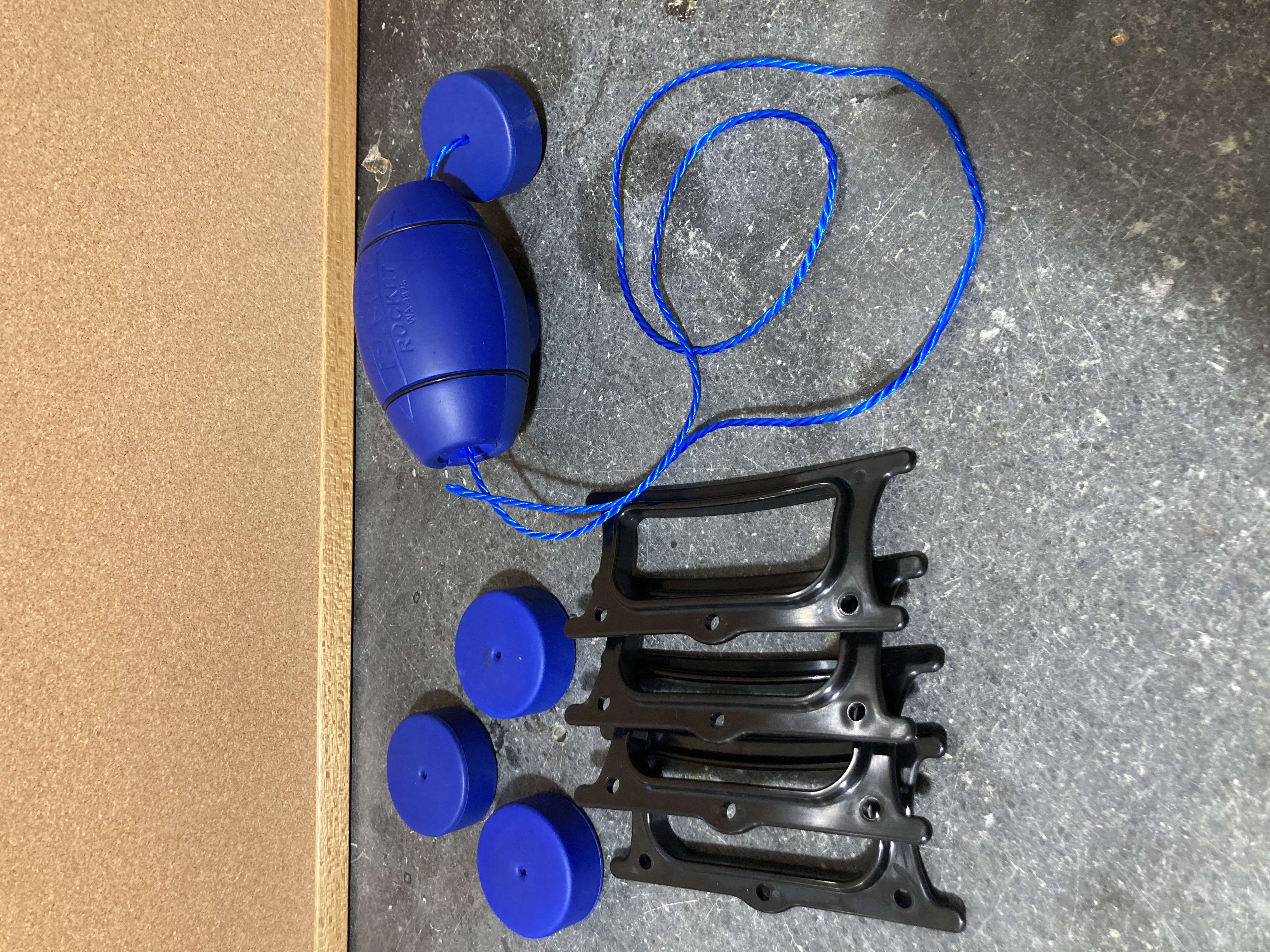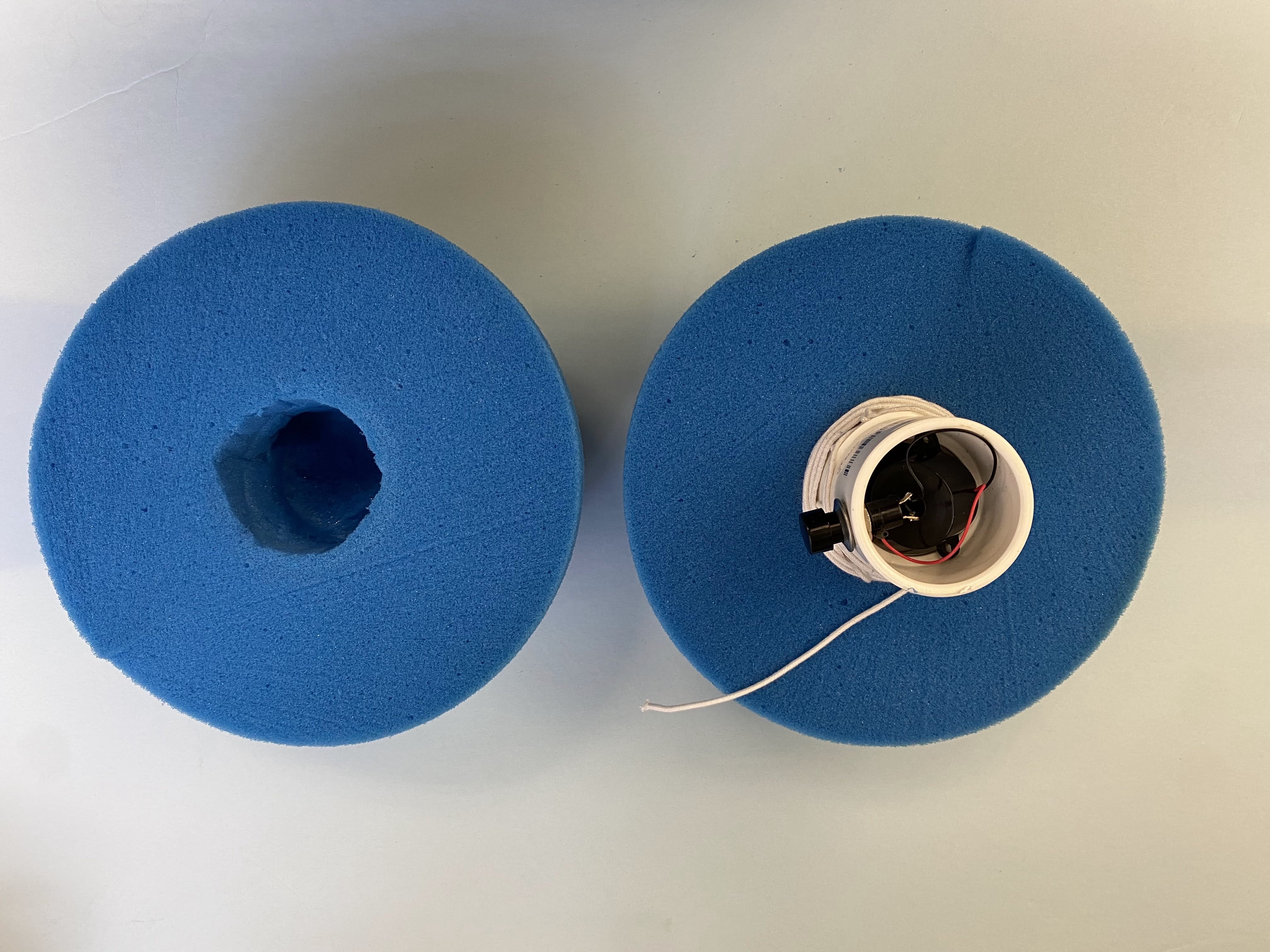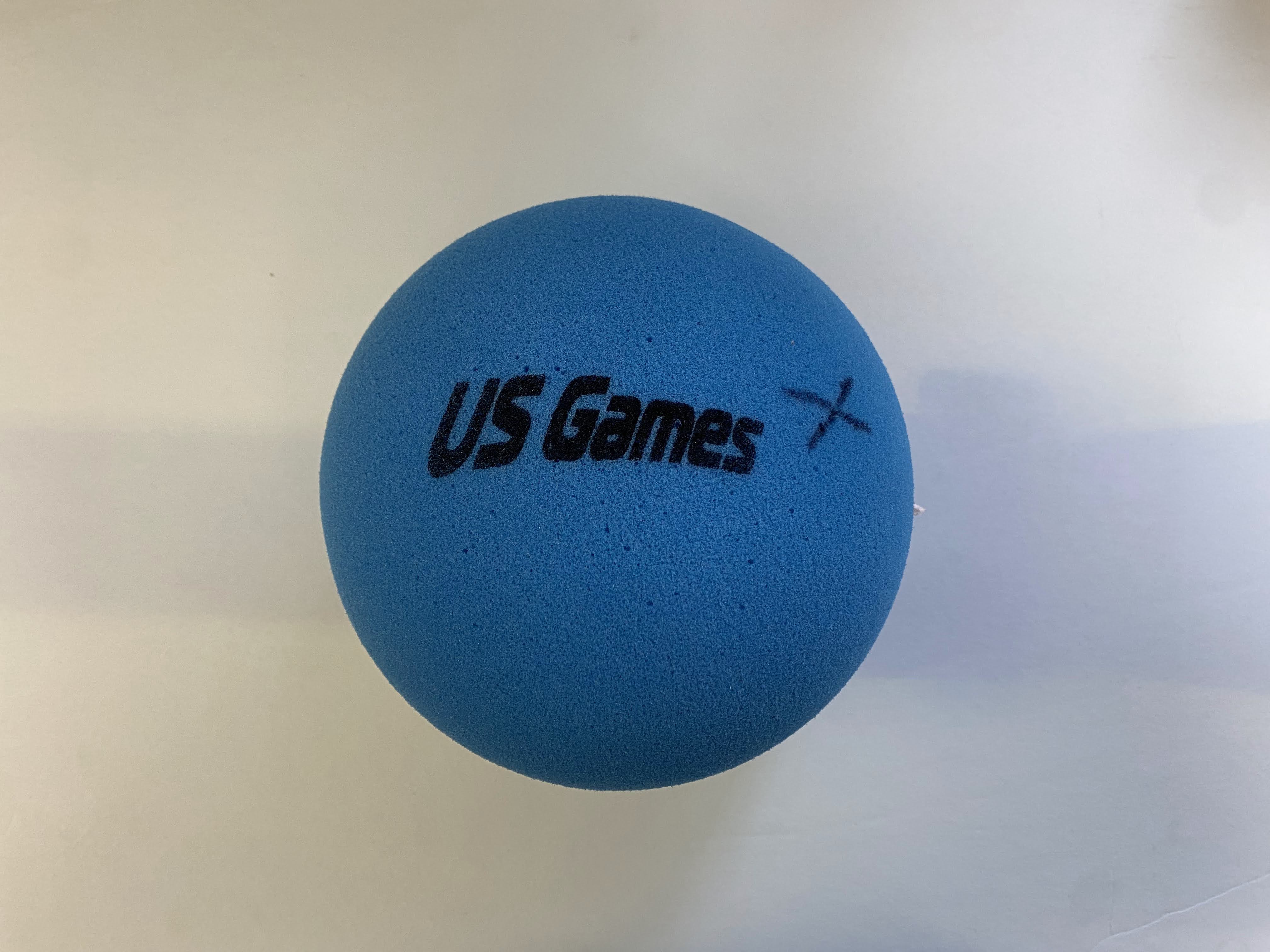3B40.10 • Doppler Effect: Doppler Ball and Rocket
Picture and video shows demonstration used at the University of Texas at Austin



Instructions:
DOPPLER BALL
- Unravel the string from within the sphere to its full length.
- Push the "X" to start/stop the buzzer.
- Use the string to carefully spin the ball over your head.
DOPPLER ROCKET Procedure A: Swinging the Doppler rocket overhead
- Pass one length of rope through the center of the unit and tie the rope to itself, be sure to use a reliable knot.
- Lower the Doppler Rocket until it is about 1 meter below your hand.
- Swing the Doppler Rocket around in a circle over your head. A period of about one second will allow students to hear the Doppler shift.
Procedure B: Flying the Doppler Rocket Horizontally (shown in video above)
- Pass two equal lengths of rope through the center of the rocket.
- Thread each free end of rope through a handle cushion and tie each through a rope handle. Be certain to use a reliable knot.
- Position a student at each end of the rope, with each student holding two handles.
- Move the students apart until the rope is taut.
- Slide the Doppler Rocket to one end of the rope.
- Ask the student at the other end to rotate the ropes around one another until they are not tangled.
- Turn on the sound from the Doppler Rocket using the switch on the side.
- Have the student nearest the rocket quickly pull apart their handles in a snapping motion. The Doppler Rocket should "fly" down the ropes to the other student.
- As the rocket approaches, the student at the other end needs to slightly separate the ropes to slow the rocket.
Procedure C: Playing Catch with the Doppler Rocket
- Turn the sound on and have students toss the rocket around like a ball. As the rocket approaches them, they should listen for the perceived increase in pitch. As the rocket moves away from them, they should listen for a decrease in pitch.
Concept Conveyed:
- The concept used for both of these demos is the Doppler effect. This effect describes that if a sound source is moving, the wavelength compresses in the direction it is moving, thus increasing the frequency. Consequently, the wavelength spreads out or expands in the direction away from its motion, thereby decreasing the frequency. This results in the variations of pitch that is observed when the ball is spun in a circle and when the rocket moves from one end of the rope to the other.
- The Doppler Rocket emits a true, sinusoidal sound waveform at a constant frequency of approximately 620 Hz. The circuit and speaker are housed in skinned foam that protects the unit during normal impacts. Velocities of 10 m/s can be easily achieved, resulting in a 20 Hz shift in frequency. The circuit is powered by a 9 V battery.
Demo Staff:
- Doppler Ball: ensure the 9V battery inside is connected properly by unscrewing the top. When screwing it back on, make sure the "X" on the ball aligns with the button of the buzzer and that the string is tucked in.
- Doppler Rocket: ensure the ropes are untangled and that the 9V battery is working. To replace the battery, remove the rings from both ends of the rocket and lift the top.
Last updated on October 10, 2023
